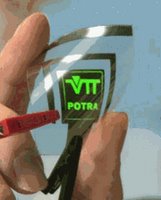
Incredibly simple to learn - the entire main game is controlled with only 1 analogue stick to tilt the landscape to get the ball to move - but almost impossible to master with later stages becoming fiendishly difficult: sort of a modern day Tetris. One evening we found this web site which offers videos of so called Monkey Ball "world records". We downloaded the file and sure enough the video (it's about 90mb) contained every level being completed in a ridiculous time with an absolutely phenomenal amount of control on display. Instead of progressing through a level as the designers intended, these super players veer off coarse, hitting edges and causing their monkey to soar over most of the obstacles. Matt and I named these techniques freestyling. By this point, I had acquired Monkey Ball 2, offering more levels to challenge us. Again, there was a video (~170mb) of this game being completed quickly. Again the amount of skill on display is outrageous, but we have been learning from it - weaving left and right at the start of levels coming off the ramped sides builds up speed to allow some pretty naughty jumps, although we have nowhere near the skill of these guys. The music for these videos is pretty cool (although we can't quite explain the presence on Enya on there).

Our alumni friend, Brooks also has the games so when he comes up at weekends, we often get some 3 player action going. In addition to the regular game, Monkey ball offers up to 12 bonus games including racing, target (try to fly your ball on a target to get points), fight (giant punching gloves attached to the ball), golf (with some crazy courses), bowling (again with the option for some weird lanes), billiards, boat (row your ball down a river coarse), shot (a virtua cop style game), dogfight (aerial combat), soccer, baseball and tennis. All these subgames have extra features to unlock: in fact whilst "researching" this blog entry I've managed to unlock the second stage of crazy bowling...
 Monkey Ball 2 features a single player "story" mode tacked on to the original level-after-level style. This again demonstrates the surrealness of the Japanese designers and I really pity who ever had the unenviable task of translating the game into English. Suffice to say it features an evil Monkey, Dr Bad-Boon (sigh), attempting to steal all the bananas fro our hero Monkeys and also marry Meemee - one of the playable characters. World 7 sees Bad-Boon returning home for a bath even though he's being chased by the Monkeys. Truly bizarre.
Monkey Ball 2 features a single player "story" mode tacked on to the original level-after-level style. This again demonstrates the surrealness of the Japanese designers and I really pity who ever had the unenviable task of translating the game into English. Suffice to say it features an evil Monkey, Dr Bad-Boon (sigh), attempting to steal all the bananas fro our hero Monkeys and also marry Meemee - one of the playable characters. World 7 sees Bad-Boon returning home for a bath even though he's being chased by the Monkeys. Truly bizarre.The down side of course that now we are world 7/10, the levels are (almost)impossible so the amount of swearing and bad language that comes out my room would make a sailor blush. Mind you, we though the world 6 levels had us beaten as well...





